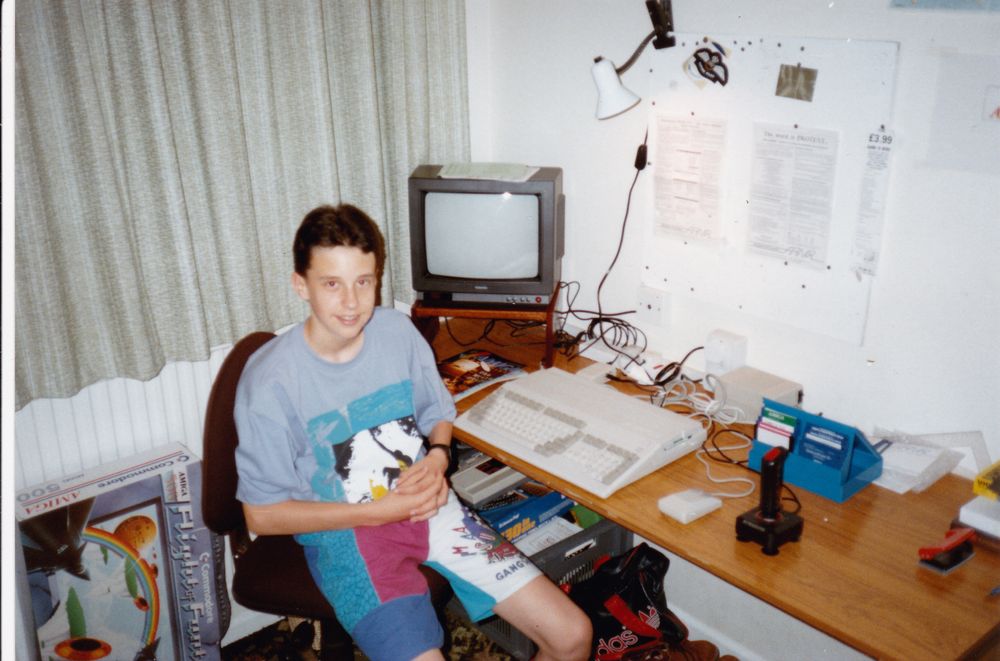Welcome
04 Apr 2021 • 1 minute
Ahead of its time: The Commodore Amiga
8-bit computing in the UK was very difficult to pretty much everywhere else in the world, because for a few years circumstances conspired to make a few manufacturers compete and create amazing machines.
The home computing market exploded, but also departed as quickly as it arrived, leaving manufacturers desperately trying to innovate for new generations. Many failed.
Over in the US, as PCs were gaining in popularity, two competing parties were ushering in the 16-bit era: Commodore and Atari.
Oddly, at different points in time, both companies owned (to certain degrees) what was created by The Amiga Corporation, but Commodore ending up winning the war.
By the time I knew anything about the Commodore Amiga, it was hugely popular in the UK and widely considered the successor to 8-bit computers that had flooded homes only a few years before. 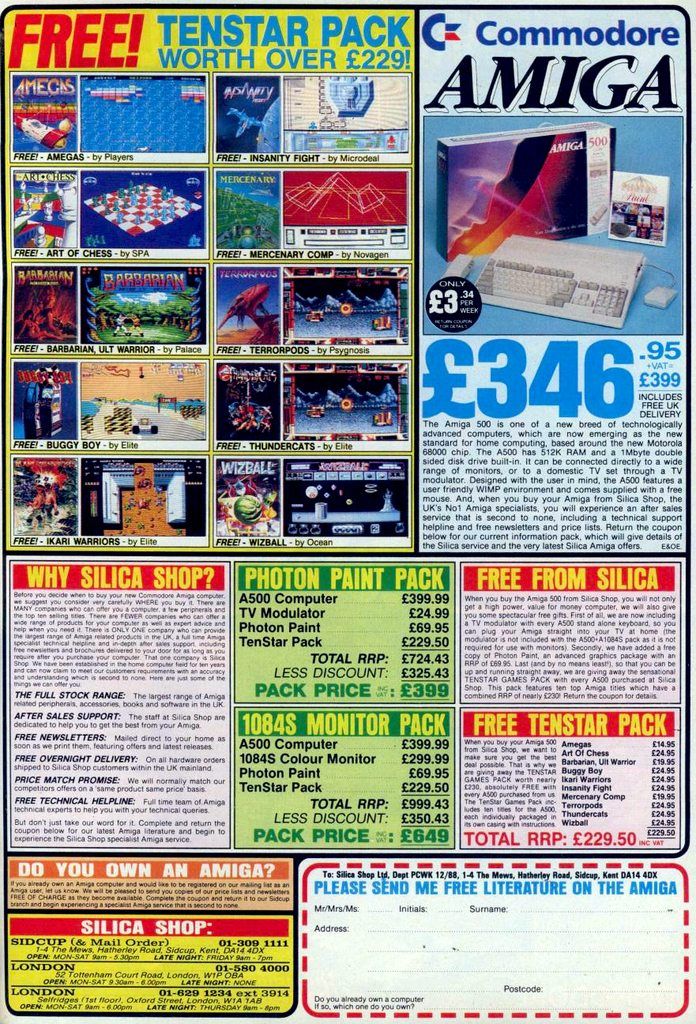 Silica Systems advertisement for the Commodore Amiga The Commodore Amiga originally retailed for £399 in the UK. At the time I did a weekly paper round (180 newspapers for £3.60) so I was in for 110 weeks of hard saving. Thankfully my parents stepped in after I’d passed the £100 point. (Discounted offers had started to appear by that point too, making it slightly cheaper.)
Silica Systems advertisement for the Commodore Amiga The Commodore Amiga originally retailed for £399 in the UK. At the time I did a weekly paper round (180 newspapers for £3.60) so I was in for 110 weeks of hard saving. Thankfully my parents stepped in after I’d passed the £100 point. (Discounted offers had started to appear by that point too, making it slightly cheaper.)
In terms of programming, one tool appeared that excited young developers because, for once, it was possible to develop games without knowing the low-level intricacies of the machine’s hardware. Up to this point I had only been playing with BASIC on the 8-bit ZX Spectrum machine. Most of those programs had been typed in from magazines that featured monthly listings.
But, in 1988, Francois Lionet created STOS BASIC for the Atari ST. And in 1989, AMOS The Creator was released for the Commodore Amiga.
It was the most exciting part of my 16-bit experience. A couple of school friends and I decided we’d try to write public domain games and for a while we were on top of the world, discovering our games listed in small-print in the Amiga magazines.
Looking back I can only remember spending hours over long summers on these programs but I think in reality my time with the Amiga was quite limited.
After undertaking a work experience program my mentors told me I should really be working with a PC as ‘that’s where the world is going’ and I should be learning a professional programming language like C. This advice was the death knell for my experience with the Amiga. It wasn’t terrible advice - it set me up for a career in software development.
The story of the Amiga is checkered to say the least. Almost all parties involved in the machine disagreed with Commodore’s marketing strategy (or lack of one). It was obvious Commodore had no idea how to market a machine that was way ahead of it’s time.
Recently I thought I’d do some searching to see if I could find any evidence of our games amongst a still active Amiga community. I was amazed to find our disks available for download and on them, the code and artwork we we’d worked on 30 years ago.
Our small team, Creative Software Applications, only made a handful of games and utilities. Here is the artwork for Pair Crazy and The Hacker Simulator. 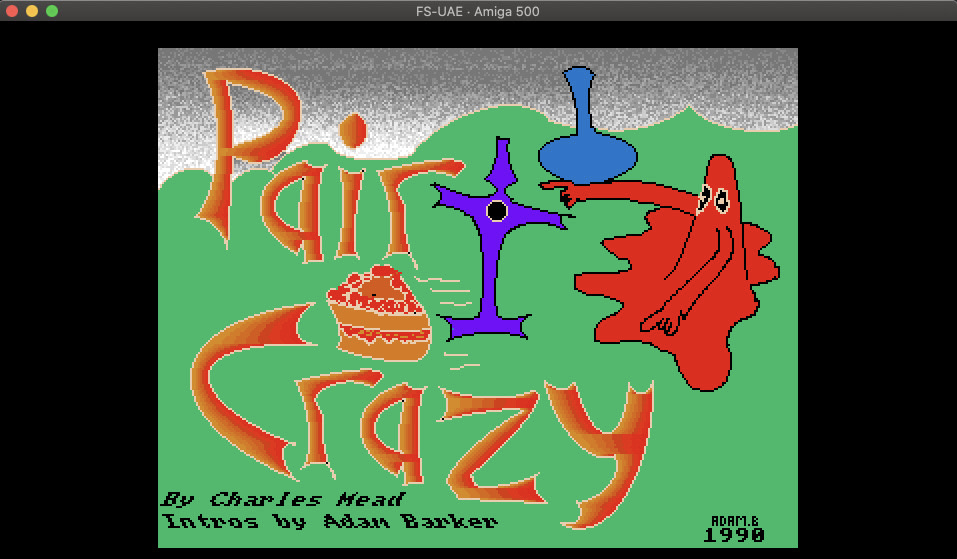 Pair Crazy Loading Screen
Pair Crazy Loading Screen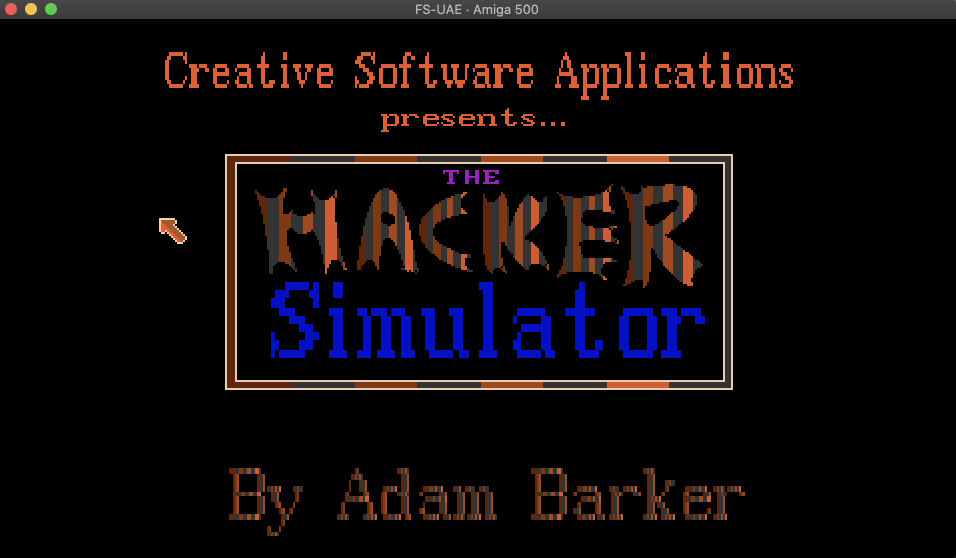 The Hacker Simulator Loading Screen
The Hacker Simulator Loading Screen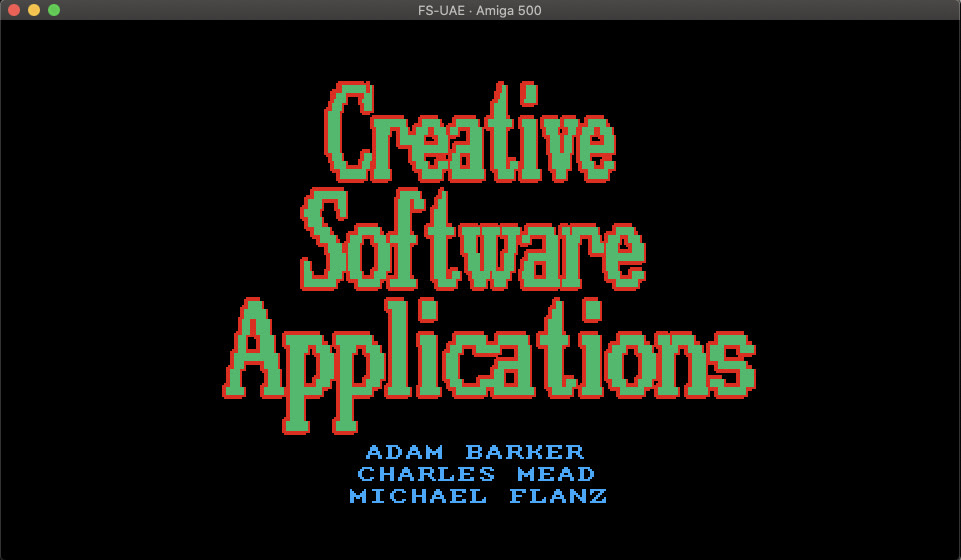 Creative Software Applications Weirdly, @petsasjim1 make a video of The Hacker Simulator. At the time I thought it was pretty good but.. well, it’s rubbish.
Creative Software Applications Weirdly, @petsasjim1 make a video of The Hacker Simulator. At the time I thought it was pretty good but.. well, it’s rubbish.
Quality of our programming aside, few things matched the excitement of being a part of that era. It makes me wonder if kids in today’s connected world have something similar. I’m sure they must, but I wonder if whatever it is feels like actual magic to them. 